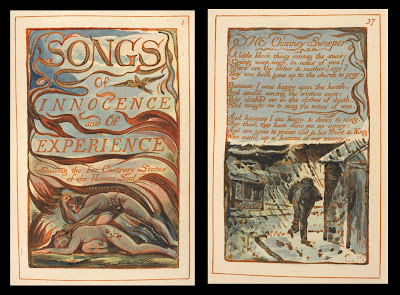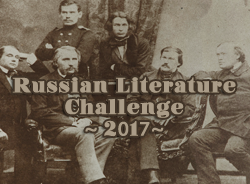The Songs of Innocence by William Blake
 A few years ago I bought the Norton Anthology of English Poetry for a class I was taking but since then it has become one of my most prized possessions. I often flick through the pages and read a poem or a few lines. It's something I use when I'm not feeling inspired and it instantly inspires creativity. A few days ago I was flicking through the pages to put some of the poems onto my Classics Club list and I came across Introduction from the Songs of Innocence and of Experience by William Blake. I had never read William Blake before so I looked up his work and decided to start the new Classics Club era with reading one of his works. This post will be about Songs of Innocence followed by another post on the Songs of Experience.
A few years ago I bought the Norton Anthology of English Poetry for a class I was taking but since then it has become one of my most prized possessions. I often flick through the pages and read a poem or a few lines. It's something I use when I'm not feeling inspired and it instantly inspires creativity. A few days ago I was flicking through the pages to put some of the poems onto my Classics Club list and I came across Introduction from the Songs of Innocence and of Experience by William Blake. I had never read William Blake before so I looked up his work and decided to start the new Classics Club era with reading one of his works. This post will be about Songs of Innocence followed by another post on the Songs of Experience.
Songs of Innocence
The Songs of Innocence were originally written and published in 1789 and a later edition included The Songs of Experience. Blake also illustrated both collections and each one illustration is beautiful and deeply affecting. William Blake wrote these two poetry collections to show the two contrary states of the human soul. The first of the two parts, as you can tell by the title, are a collection of poems that are innocent and simple but extraodinarily beautiful and powerful. I've never really read anything like them and I think that's why I find them to be so enchanting. They give me a similar feeling to when I read Hans Christian Andersen's Fairy Tales or Alice in Wonderland. It's almost like my soul ignites and I have a need to create. I think this collection of poetry is going to become one of my very favourites. I'm already thinking about when I will read them again.In the Songs of Innocence there are 19 poems and it starts with a poem called "Introduction" which is a beautiful piece that details a child asking a piper to sing songs about a lamb, and then to sing songs of happy cheer and finally the child asks the piper to write down the songs in a book so that all may hear:
"'Piper, sit down thee and write
In a book, that all may read.'
So he vanished from my sight;
And I plucked a hollow reed,
And I made a rural pen,
And I stained the water clear,
And I wrote many happy songs
Every child may joy to hear."
The following eighteen poems in the collection detail different people or states of being or something in nature. They are, in order: The Shephard, The Echoing Green, The Lamb, The Little Black Boy, The Blossum, The Chimney-Sweeper, The Little Boy Lost, The Little Boy Found, Laughing Song, A Cradle Song, The Divine Image, Holy Thursday, Night, Spring, Nurse's Song, Infant Joy, A Dream, and On Another's Sorrow. All are beautiful pieces of art that can be read together or alone.
Some of my favourite lines from this collection are:

"And by came an angel, who had a bright key,
And he opened the coffins, and set them all free;
Then down a green plain, leaping, laughing, they run
And wash in a river, and shine in the sun."
- The Chimney Sweeper
"For Mercy has a human heart;
Pity, a human face;
And Love, the human form divine:
And Peace, the human dress.
-----------------------------------
Love, Mercy, Pity, Peace."
- The Divine Image
"The moon, like a flower
In heaven's high bower,
With silent delight,
Sits and smiles on the night."
- Night
"Can I see another's woe,
And not be in sorrow too?
Can I see another's grief,
And not seek for kind relief?"
- On Another's Sorrow
As you can tell from these lines this collection was meant to show the "innocent" or child like state of the human soul. A state that is free of corruption and free of cruelty or malice. A lot of the titles in the Songs of Innocence have corresponding titles in the Songs of Experience so I am definitely looking forward to comparing them to see the two contrary states of the human soul that William Blake set out to write and illustrate. I can't wait to read more William Blake!



Comments
Post a Comment